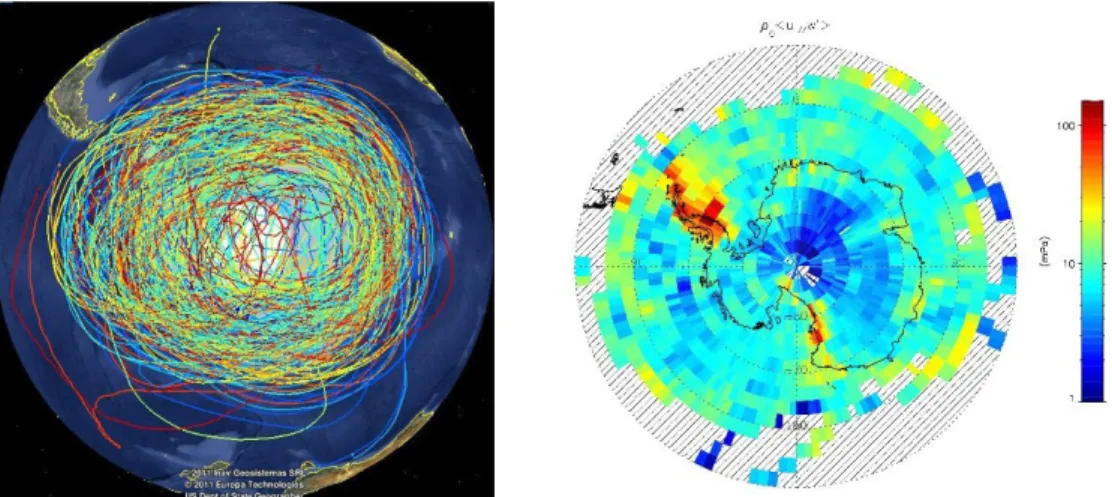HAL Id: hal-00840916
https://hal.archives-ouvertes.fr/hal-00840916
Submitted on 11 Jul 2013HAL is a multi-disciplinary open access archive for the deposit and dissemination of sci-entific research documents, whether they are pub-lished or not. The documents may come from teaching and research institutions in France or abroad, or from public or private research centers.
L’archive ouverte pluridisciplinaire HAL, est destinée au dépôt et à la diffusion de documents scientifiques de niveau recherche, publiés ou non, émanant des établissements d’enseignement et de recherche français ou étrangers, des laboratoires publics ou privés.
Gravity-wave characteristics derived from
quasi-Lagrangian balloon flights in the stratosphere
Albert Hertzog, Riwal Plougonven, Valérian Jewtoukoff, Vincent Robert
To cite this version:
Albert Hertzog, Riwal Plougonven, Valérian Jewtoukoff, Vincent Robert. Gravity-wave characteristics derived from quasi-Lagrangian balloon flights in the stratosphere. Symposium OGOA, May 2013, Lyon, France. �hal-00840916�
Réunion OGOA, 23-24 mai 2013, session : Atmosphère
A. Hertzog (LMD)
Gravity-wave characteristics derived from quasi-Lagrangian balloon
flights in the stratosphere
A. Hertzog, R. Plougonven, V. Jewtoukoff (LMD) R. A. Vincent (U. of Adelaide)
Most of our observational knowledge of gravity waves in the atmosphere comes from vertical profiles performed by ground-based instruments (radar, lidar), radiosoundings or space-borne instruments. Superpressure balloon flights on the other hand provide the opportunity to sample the atmosphere along quasi-Lagrangian trajectories, like drifters in the oceans.
The presentation will be devoted to presenting elements describing how gravity-wave
characteristics are deduced from observations collected during those specific long-duration balloon flights. This technique will be applied to recent measurements over Antarctica and the surrounding oceans during the framework of the international Concordiasi project. The Concordiasi observations have in particular enabled us to estimate gravity-wave momentum fluxes, which are a useful
constraint to gravity-wave drag parameterization used in atmosphere general circulation models. Momentum flux maps produced with this dataset are also used to identify major wave sources and to emphasize the large spatial heterogeneity of wave activity in the southern polar regions.
Last, by constructing probability distribution functions of momentum fluxes, we will show
observational evidence that gravity-wave activity in the stratosphere is highly intermittent. Yet, the wave intermittency varies significantly according to the wave sources, and is higher over mountain ranges than everywhere else. Future similar balloon flights will be performed in the tropics, and will particularly address the problem of wave generation by tropospheric convection. Laboratory
experiments would likely be very helpful to study the efficiency of such wave source, and to provide the characteristics of the generated waves.
1. Boccara, G., A. Hertzog, R. A. Vincent, et F. Vial, Estimation of gravity wave momentum flux and phase speeds from quasi-Lagrangian stratospheric balloon flights. 1: Theory and simulations, J. Atmos. Sci., 65, 3042-3055, 2008.
Figure 1: Left :Trajectories of the 19 long-duration balloons lauched from McMurdo, Antarctica in September-October 2010; right : Gravity-wave absolute momentum flux derived from the balloon observations over the whole campaign (September-January)
